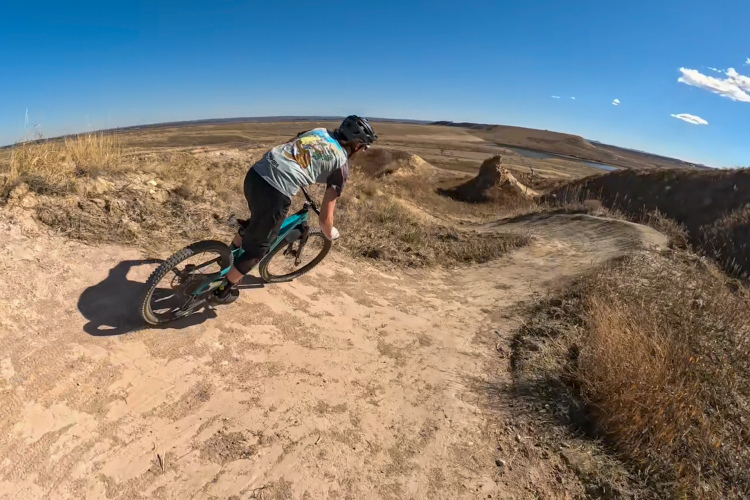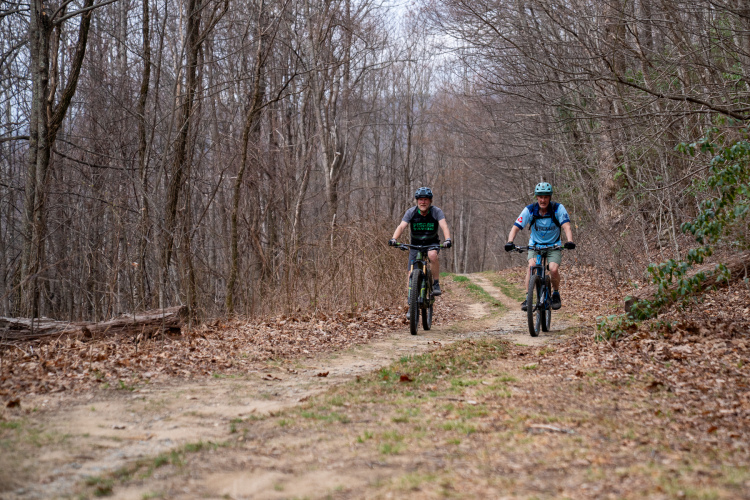
The 2023 downhill and enduro race series on the UCI World Cup circuit was predominantly battled on the European front. Looking at the 2024 schedule, it doesn’t seem we will see a change anytime soon.
But one American-based race series hopes to see American racing continue to grow and perhaps even challenge the dominance of the European market. They first made strides in the enduro corner and are now setting their sights on the downhill sector.
Yeti Cycles founded Big Mountain Enduro in 2012 to push and promote the sport of enduro racing. Over the years, BME passed from Yeti and through the hands of several owners.
BME’s ownership now falls on Robert Herber, who stepped into the position in 2022. Herber was no stranger to BME. He had participated in some BME races. At one of these races, he met BME’s former owner, Brandon Ontiveros, in 2021.
Ontiveros was ready to move on from his position at BME, and Herber was there to step into the newly vacated role. Herber also saw an opportunity to expand this primarily Western gravity series. Soon after Herber took over, BME expanded, announcing races in the East.
“It’s risen out of a Colorado-centric series to a little bit bigger of a regional series. Last year, we started scratching toward a national thing,” Herber told us. “That was my big push for this year; I wanted a stop in every time zone. A true national series.”
And this budding national series is adding a new racing discipline to its portfolio—downhill. Big Mountain Downhill (BMDH) is ready to kick off the 2024 racing season.
“We’re constantly looking at ways to grow it. Downhill is only the start of what we’re working on here,” Herber said. And while the race series is steadily growing, Herber emphasizes quality over quantity, ensuring downhill will be the focus for the upcoming 2024 season.

Fueling the DH and enduro scene in the U.S.
We recently chatted with World Cup downhill racer Anna Newkirk, and asked why she thought she was among the few American women in the top rankings. One reason is that she lived in Europe. Newkirk, an American citizen, was born in America but has lived in Europe since childhood.
“Racing World Cups is a lot more accessible for me,” said Newkirk. “I’m at a huge advantage because it’s easy for me to get there. It doesn’t cost me an arm and a leg.”
While Newkirk is at an advantage, many other American racers are disadvantaged in World Cup events. In 2023, only two DH races were on the North American continent. For EDR, the enduro bikes didn’t even touch North American soil.
For whatever reason, professional mountain bike racing has been largely a European focus. This is something Herber and Big Mountain Enduro hope to change.
And he is unapologetic about it. “We’re not holding anything back. We are 100% trying to put American racing back on the map.”
The strategy isn’t to try to partner or align with current UCI qualifying events but to offer an alternative. This alternative allows racers to race at the highest levels without dealing with the back and forth to Europe.
The alternative: starting a new American downhill series.
BME forged a good path of growth over recent years. Herber hopes to do the same with the DH series. Similar to Newkirk, Herber sees American racers traveling to Europe at a disadvantage.
“Overseas is such a challenge, especially for American riders born and raised here. And it’s not that our people can’t cut it—they can; our guys and gals are absolutely as fast. But, it’s pathetic to not have anything in North America,” Herber said.

Big Mountain Enduro/Downhill and UCI qualifying points
So, if BME/DH is trying to put American downhill mountain bike racing back on the map, will it help American racers qualify for the next level? Can BME/DH race points qualify athletes for the UCI World Cup series? In short, no.
“BME has not had a qualifier for quite a while—five, maybe seven years now,” Herber said. “I would love to do that, but I’m not going to if they’re not putting racing back in the U.S.”
This will also include BME’s new DH series. Racers participating in BMDH will not collect points to qualify them for any World Cup races—at least, not from the BMDH events. While this may seem like a drawback for Big Mountain races, Herber has seen more racers opt out of UCI qualifying races and follow the BME circuit.
The two big reasons: money and scheduling.
The first reason is that BME pays racers more. “[We gave] the pros more money than we have ever given them in the past. Actually, we were number one in the world. We were outpaying what [EDR] did,” Herber told us.
The Big Mountain Enduro will pay a total of $64,000 over a season, with equal prize amounts for men and women: $2,000 for 1st, $1,500 for 2nd, and $1,000 for 3rd.
IN 2023, the UCI paid €1,000/$1,095 for 1st place enduro athletes, €600/$657 for 2nd, and €400/$438 for 3rd. The pay for enduro athletes is certainly higher, but downhill athletes racing the World Cup stand to make more, with €3,750/$4,100, €2,100/$2,300, and €1,250/$1,370 for 1st, 2nd, and 3rd.
Herber also mentioned that more teams are writing the BME schedule written into their athletes’ contracts. The better they do at BME events, the more money they make. “In their contracts, it says ‘Attend all BME’s.’ Athlete pay is often structured off how they rank in BME. If they forfeit that to go to the EDRs, they just can’t [afford to] do it.”
And while we won’t dive into the depths of racing contracts, one could speculate that more sponsors see the benefits of having their racers stay stateside. This isn’t to say that a win on the World Cup stage is insignificant to a sponsor, but that win is exponentially further out of reach for North American racers traveling to Europe.
For many American racers, traveling back and forth to Europe for each event is simply out of the question.
“The EDR schedule came out while we were at Big Sky for the BME,” Herber told us. “A bunch of the top riders came up and were chatting with us and they said, ‘We don’t think we’re going to Europe at all next year.’”
Herber feels that for many riders to be truly competitive on the current UCI schedule, they would need to live in Europe for six months. And, for many, that also isn’t an option, especially when a race series like BME pays as well as it does.

Big Mountain goes downhill
A downhill series wasn’t a new idea for Herber and his staff at BME. In fact, the idea bounced around for a while, and he waited for the perfect time to unveil it. After surveys and chats with sponsors and folks in the bike industry, the BME decided to move forward with a downhill series.
Herber has been blown away by the positive response he received. Mountain bike companies and race teams told Herber, “This is exactly what we want to get behind. We want one big series that everyone knows about and is on the calendars,” he said.
The newly added BMDH series will follow the already established BME series, sharing race weekends. However, DH will start with two fewer racing weekends than the enduro races.
“BME is a six-round series, and inside those six are four that are DH as well,” Herber said. “It will be the same weekend. DH finals will be Saturday nights, and enduro is Saturday and Sunday.”
The DH format will consist of a track walk on Friday morning, followed by practice and seeding that evening. Saturday morning will bring another practice, with the finals race that evening. Herber consulted with several people on this format and will leave options open for tweaks and changes.
In this initial year of expansion with BMDH, Herber says all he can hope for is growth. Already, he has been surprised by the excitement of the announcement. “The response has been tremendous. There are a lot of athletes [last] year that were competing in enduro because they were getting more press, but their true passion is DH,” Herber shared.
BME has done an excellent job showcasing the talents of American enduro racers. Herber wants BMDH to do the same for Stateside DH racers.
“We want to focus on them, bring them into the limelight, and show the American public that we have some good riders.”
The BMDH series kicks off on May 11th at Windrock Bike Park in Windrock, Tennessee, before heading to Sunrise Park Resort in Arizona on June 8th. The series then goes to Brian Head Resort in Utah on July 13th and finishes at Tamarack Resort, Idaho, on August 10th.






0 Comments